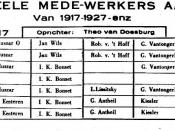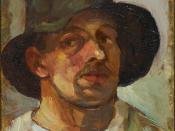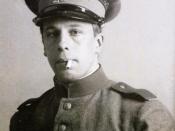De-Stijl(The Style),also called " Neoplasticism" is recognizable by the use of straight horizontal and vertical lines as well as the use of the primary colors red, yellow and blue. They also used the colors black, white and gray. It is a style that went back to the fundamental elements of the art: color and form, level and line. With these elements the artist developed new sculptural language and with that the placed the ideal world opposite the reality.
Most of the artists used closed and open forms, density and space, color and form. But using these elements within one painting, the ideal harmony could be reached. All the elements have their own function in totality.
The lines are the borders and make the open or closed forms. The lines are also used to create a certain space. The border of the painting is not the end of the painting.
By using only the primary colors, the artist could create a 3-dimensional effect. The colors attract immediate attention and the rest of the painting seems to go to the background. It looks like the white forms are further back than the colored forms. Therefore, the artists created a front and a back in their paintings.
The development of De Stijl
The De Stijl movement was started in Netherlands from 1917 to 1931. The founder, Theo van Doesburg started a group which was an association of painter Piet Mondrian, Bart van der Leck, and Vilmos Huszar, the architect Jacobus Johannes Pieter Oud, the poet and essayist Antony Kok and other artists. Theo van Doesburg applied De Stijl principles to architecture, sculpture and typography. He edited and published the journal "De Stijl" from 1917 until his death in 1931. This publication spread the movement's theory and philosophy to a large...


